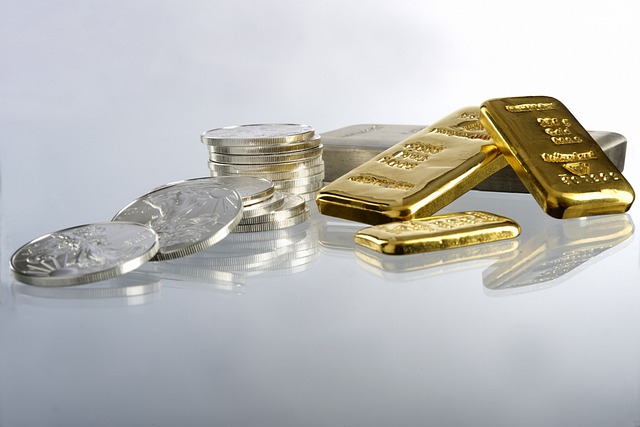Find Out What Unexpected Uses Are Driving the Interest in Gold and Silver — Which Lear Capital Says Could Heighten the Metals’ Value
The global reserves of gold and silver aren’t infinite; as Kevin DeMeritt, Lear Capital founder and chairman, points out, only a certain amount of newly excavated precious metals can be put into circulation each year.
“The gold and silver mining supply, especially on the gold side, has been very consistent on a yearly basis,” DeMeritt says. “That really doesn’t change all that much. You can only pull so much out of the ground — and even with new technology, we’re having to go deeper and deeper inside the Earth to get it.”
Various factors can sap the available supply of gold and silver — including a notable increase in a particular utilization for either precious metal, which can fuel interest, reduce the asset’s overall availability and drive prices for it higher.
Currently, a few elements are poised to potentially impact gold and silver demand in the coming months, including:
Jewelry-Related Use
The amount of gold that was funneled into jewelry applications last year received a boost from India and China, which showed the highest jewelry-related gold demand; collectively, the two countries comprised more than half of the global need for gold to be used in jewelry.
While this year, jewelry utilizations for gold are slightly down from 2022 thus far, the precious metal’s use in necklaces, rings, and other items rose 8% between the second and third quarter, the World Gold Council reported in late October.
The demand for silver used in jewelry increased in 2022 by 29%, according to The Silver Institute’s annual survey. India also played a role in silver’s jewelry-oriented rise — the nonprofit silver industry association said the jewelry- and silverware-related demand for the metal in India notably contributed to the overall increase in the global demand for silver last year.
Recent research conducted by the London-based consultancy firm Oxford Economics on behalf of the Silver Institute found the jewelry-related demand for silver is expected to grow 34% through 2033. The combined output from jewelry, silverware, and industrial fabricators is anticipated to increase 42% during the next 10 years — essentially twice the growth rate from the previous 2014-2023 decade.
The Interest from Central Banks
Central banks, which are generally tasked with promoting financial and economic stability within countries, have bought and held gold for years. In 2009, they began purchasing substantial amounts of the precious metal, according to the Official Monetary and Financial Institutions Forum. Within less than a decade, gold totaled roughly 10% of all central bank foreign exchange assets.
In 2022, though, central banks’ gold-buying activity was particularly fervent. They snapped up 1,136 tons, according to the World Gold Council; compared to 2021, the banks ultimately purchased 152% more gold in 2022, a level that hadn’t been seen since 1950.
Central bank buying, in particular, can have an effect on gold availability, according to Kevin DeMeritt.
“Central banks purchased a quarter of all the mining supply, which is a huge jump,” the Lear Capital founder says. “They’re not speculators; they’re not day traders. They hold that metal for 10, 15, 20 years at a time. That metal is gone, and you’re not talking about small amounts here.”
The banks’ interest in gold has remained solid in 2023. Purchasing occurred at a historic pace during the third quarter, according to the World Gold Council’s most recent report on gold demand trends — which revealed net central bank buying was up 14% year over year during the third-strongest quarter the organization has recorded.
The council predicted in its report that central banks’ buying spree will continue through the end of the year, stating it expects “a robust annual total again in 2023.”
Investors’ Growing Appetite for Gold and Silver
As former Federal Reserve Chairman Ben Bernanke once said, a number of investors hold gold as “protection against … really, really bad outcomes.”
That sentiment was evident in 2022, when — amid high inflation, stock market struggles and other economic foibles — the annual global investment in gold coins and bars rose 10%.
Gold zoomed ahead of stocks in a Gallup poll conducted earlier this year involving U.S. investment perceptions. The amount of Americans who now view the precious metal as the best long-term investment nearly doubled between 2022 and 2023.
“Gold is considered more of a safe haven during recessions, market volatility, war,” Kevin DeMeritt says. “When investors are worried about the economy, usually you get more people turning to gold — which can drive up its price.”
As of 2023’s third quarter, the investment-related demand for gold was 56% higher year over year, according to the World Gold Council; bar and coin investment was up from the second quarter of this year.
Silver, too, has been in demand for investment purposes. The asset boasts a hearty performance record — a Lear Capital analysis indicates that, in tandem with gold, silver outperformed the Dow Jones Industrial Average and S&P 500 between 2001 and 2021. Between 2001 and 2022, silver’s value rose 377%.
The demand for silver has increased for the past two years. In 2022, the investment demand for silver comprised a considerable amount of overall silver demand — 27%, according to the Silver Institute.
Investors should note, Kevin DeMeritt says, that the growing industrial need for silver is likely to also contribute to the demand for the precious metal.
Last year, the industrial applications for silver increased by 5%, due in part to needs in sectors such as the automotive and construction industries.
“Silver has become a highly in-demand asset, yet the available supply hasn’t vastly increased,” Lear Capital’s Kevin DeMeritt says. “You have this industrial demand really pushing up silver [prices]. Batteries have silver in [them]; solar [elements have] silver — there’s going to be demand for silver from industrial uses, regardless if investors purchase it or not.

